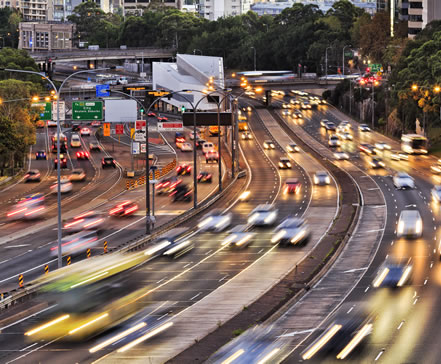MOVA M8 is the latest version which the first implementation was available in December 2017. This latest version is a significant upgrade from previous versions, having special conditioning, a new communication method including a junction mimic screen, additional bus priority facilities and a Web User Interface.
MOVA is designed to cater for the full range of traffic conditions, from very low flows through to a junction that is overloaded. For the major part of the range – before congestion occurs, MOVA operates in a delay minimising mode; if any approach becomes overloaded, the system switches to a capacity maximising procedure. MOVA is also able to operate at a wide range of junctions, from the very simple ‘shuttle-working’, to large, multi-phase multi-lane sites.
MOVA is particularly well suited to the following:
MOVA is being used by almost all Authorities who have responsibility for traffic signals, and is a requirement on new signal installations and major refurbishments on trunk roads. MOVA can be used in conjunction with any controller conforming to Departmental Specification TR2500 and it is available in one of the following forms:
For information on specific manufacturer implementations of MOVA and equipment maintenance enquiries, please contact the manufacturers directly:
TRL are able to supply a full range of consultancy services on MOVA. Please contact us at [email protected]
The latest versions of MOVA Comm, MOVA Tools and the Application Guides (AG 44 and 45) can be found on the downloads section. There is further advice about using wireless linking of detectors and the setting of intergreens on high speed roads.
